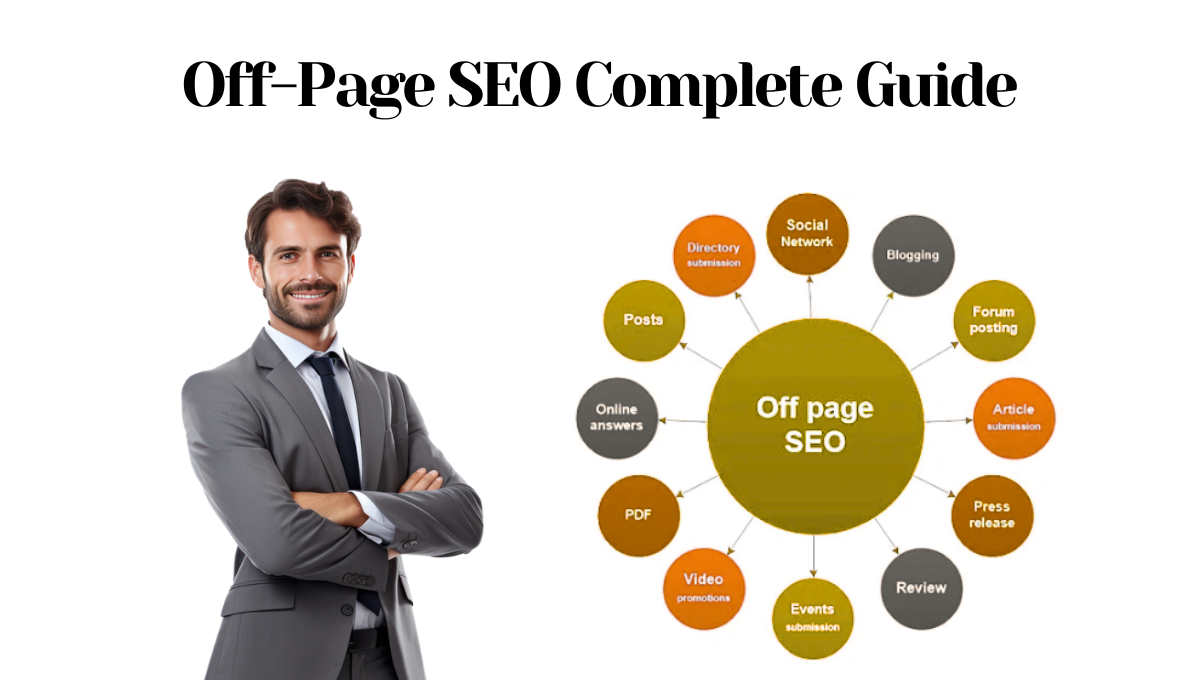Did you know that Google handles over 8.5 billion searches every day and that 93% of online experiences start with a search engine? In 2025, if you’re not using semantic SEO, you’re missing out on search’s future.
If you’re still using keyword stuffing in 2025, you’re behind the times. It’s time to learn how to use semantic SEO to get better rankings and connect with your audience on a more profound level.
This comprehensive guide to semantic SEO will teach you how to move from keyword-centric to context-driven tactics so that your content has a greater Google ranking and resonates with readers.
1. Understanding Semantic SEO: Beyond Keywords
Google is now smarter than ever, so forget about stuffing your content with keywords. It wants to know more than just what you say; it wants to know what you mean.
A lot of people still think of SEO as using the same phrases over and over again and stuffing keywords. Semantic SEO, on the other hand, is all about comprehending the purpose of searches and producing content that represents relationships and ideas found in the real world.
Semantic SEO focuses on the connections between words, phrases, and entities to help Google understand the context of your content instead of just the keywords themselves. Semantic markup SEO does this by using schema.org and structured data to make meanings clearer.
Using a semantic SEO strategy can help your website show up in rich results like knowledge panels, “People also ask” sections, and featured snippets. Using SEO semantic markup will make your content easier for both Google and users to understand.
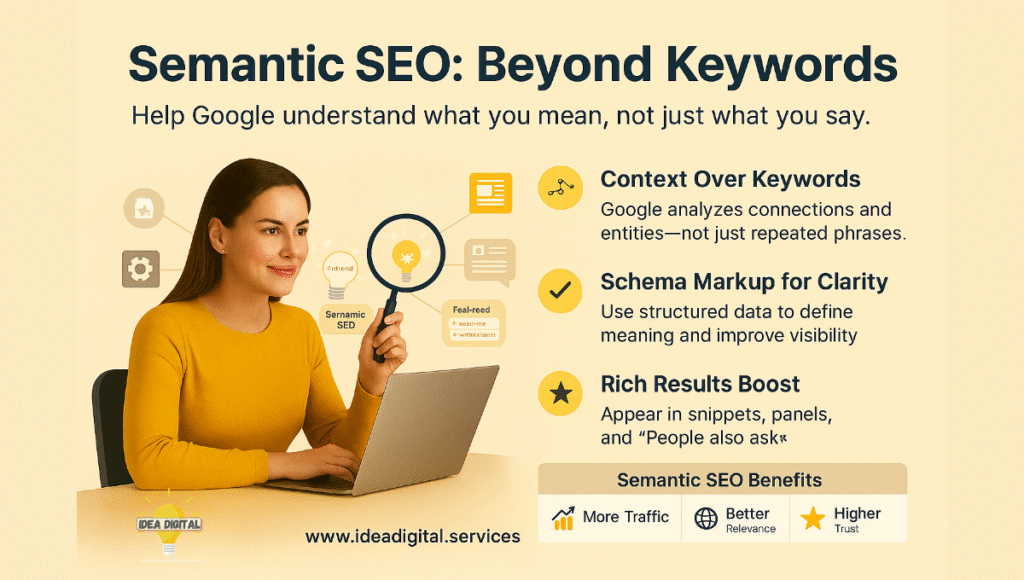
2. Semantic Keyword Research & Intent Mapping
Any successful semantic SEO strategy starts with advanced semantic keyword research. Semantic research looks at the bigger picture of what people are looking for and what they want to do when they search, while traditional keyword research looks at specific phrases.
For example, if you want to learn “How to Use Semantic SEO to Improve Google Rankings in 2025,” you should look into questions like “What is semantic content in SEO?” and “Semantic SEO meaning,” “Semantic markup SEO,” and “Semantic keyword research.”
By grouping related topics, you can meet the needs of many users in one piece of content. This method tells Google that your page is thorough and authoritative, which greatly increases your chances of ranking higher.
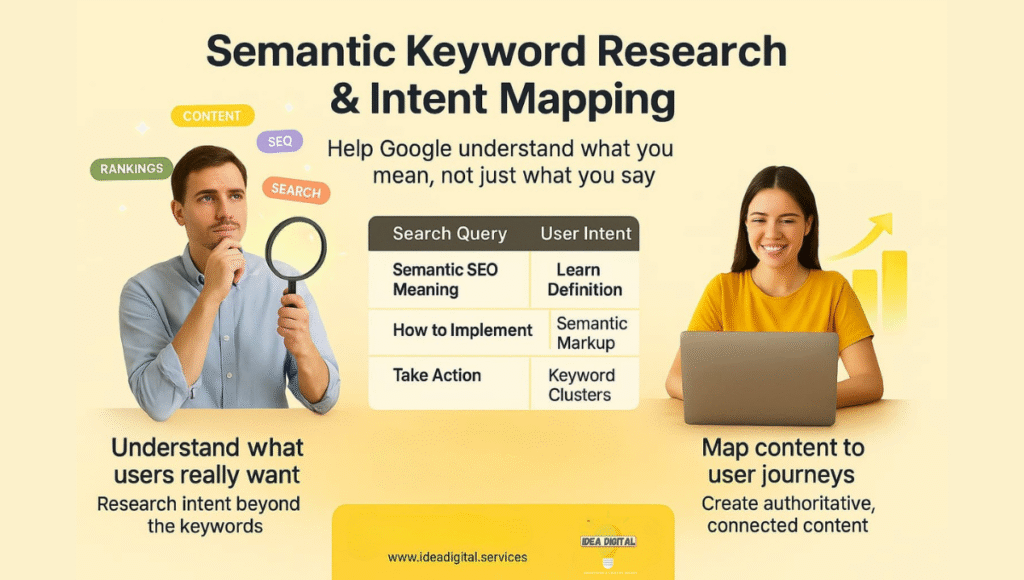
3. Planning Semantic Content Structure
A strong semantic SEO strategy goes well with a strong content structure. Instead of thinking of your website as a bunch of separate pages, think of it as a web of ideas that are all connected.
Planning means making pillar pages that cover broad topics and grouping content that goes into great detail on specific subtopics. This strategy makes it easier for people and search engines to find their way around your website.
For instance, a pillar page on “semantic SEO” might link to pages that explain “semantic markup SEO,” “semantic keyword research,” and “semantic SEO meaning.” This structure makes internal linking stronger, the user experience better, and the site’s authority on a topic higher, all of which are needed for higher rankings.
Benefits of Topic Clusters in Semantic SEO
| Benefit | Impact |
| Improved crawlability | Google understands your content map |
| Higher authority | Boosts rankings across related pages |
| Better UX | Keeps visitors engaged and on site longer |
4. Writing High-Quality Semantic Content
This is where your content comes to life. Writing for semantic search engine optimisation is more complicated than just giving a quick overview. Instead, you should give your readers useful, in-depth information that deals with their problems.Answer as many questions as you can that are related to this one, such as:
- What is semantic content in SEO?
- Does using semantic HTML make SEO better?
- What does “semantic markup” mean?
- Do semantic triples help SEO?
Use examples, real-life situations, and clear headings. To give the text context, use synonyms and words that are related to it. This strategy not only helps readers, but it also gives search engines the semantic clues they need to rank your content higher.
Semantic triples (relationships between subject, predicate, and object) make context stronger. For example, Yoga Mats are made of materials that are good for the environment.
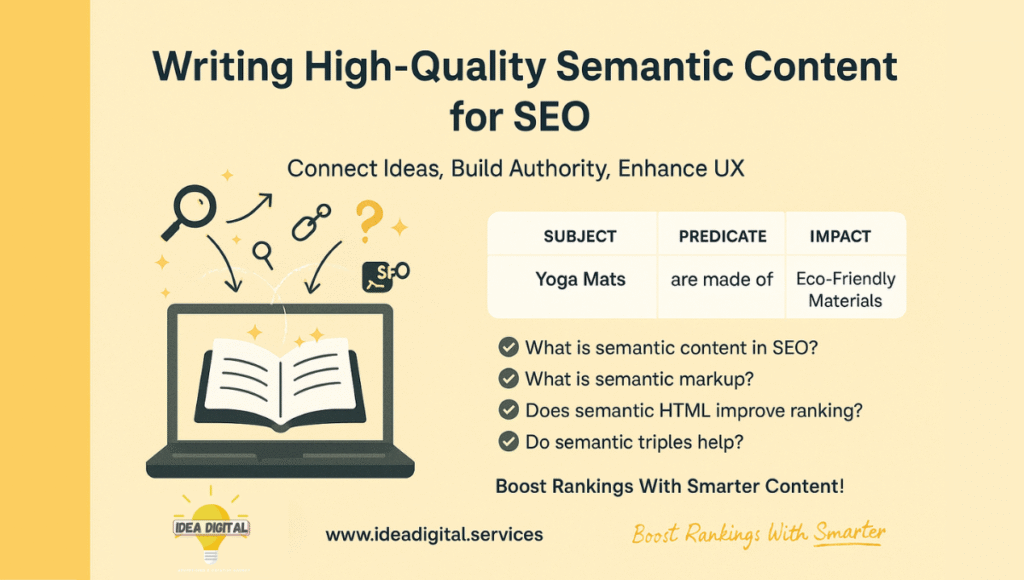
5. Technical Semantic Elements & Schema
Technical parts back up the meaning of your content. Semantic markup SEO (like schema.org) helps Google understand the context of your page by giving it structured data.
For example, marking up reviews, product details, or frequently asked questions makes it more likely that you will get rich results and more clicks. Semantic HTML elements (like header, section, and footer) also enhance accessibility and provide a clear definition of your content hierarchy.
When used with a semantic SEO strategy, new technologies make sure that your content is easy for both search engines and people to find.

6. Enhancing UX & Site Structure for Semantic Ranking
User experience is an important factor in ranking. A clean, logical site structure that follows the rules of semantic SEO makes the site easier to use and better for SEO.
To help with semantic rankings, pay attention to:
- Clear links between related pages on the inside (pillar and cluster approach)
- Fast load times to keep bounce rates low
- Mobile optimization for easy navigation
- A design that is always the same and helps users understand.
A site that is easy to navigate makes users happier and helps Google figure out how your content is related and important. This alignment between UX and semantic SEO keeps your site competitive.
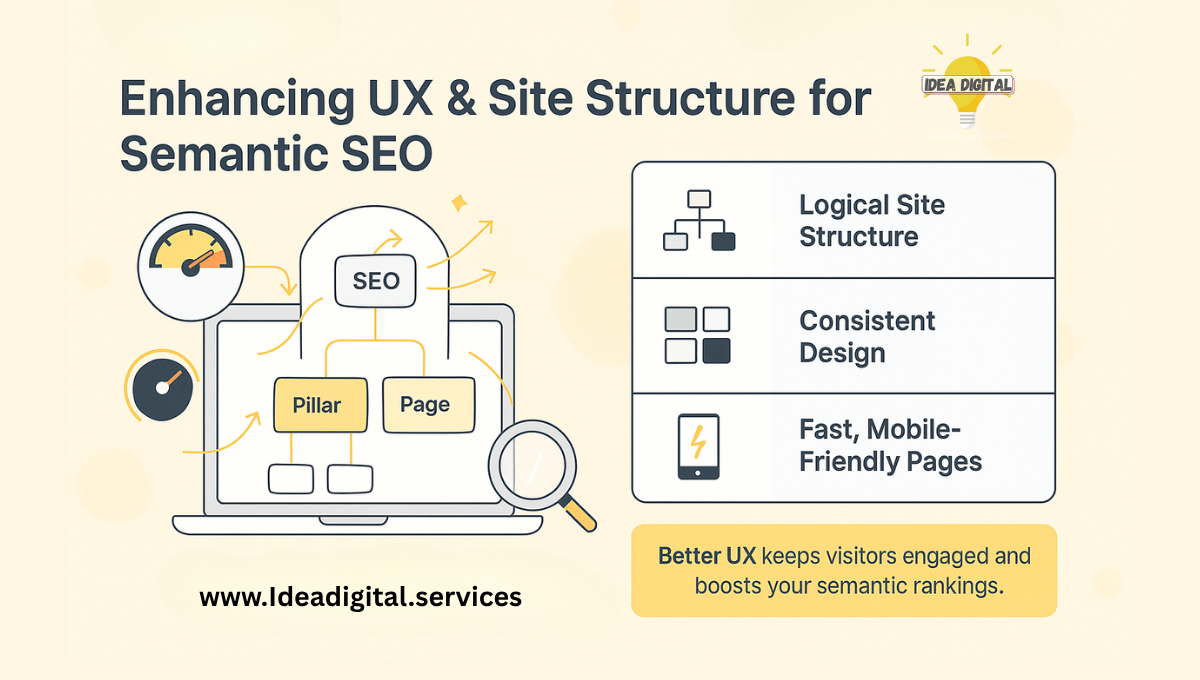
7. Tools, Testing & AI in Semantic SEO
You need the right tools and to keep optimising if you want to use a semantic SEO strategy. MarketMuse, SurferSEO, and Clearscope are AI-powered tools that look at how deep your content is on a topic and give you ideas for how to improve it.
Check the headings, subheadings, and internal links regularly. Watch how schema markup affects how visible and engaging your site is for users. These tools will help you stay ahead of changes to algorithms and keep making your semantic signals better.
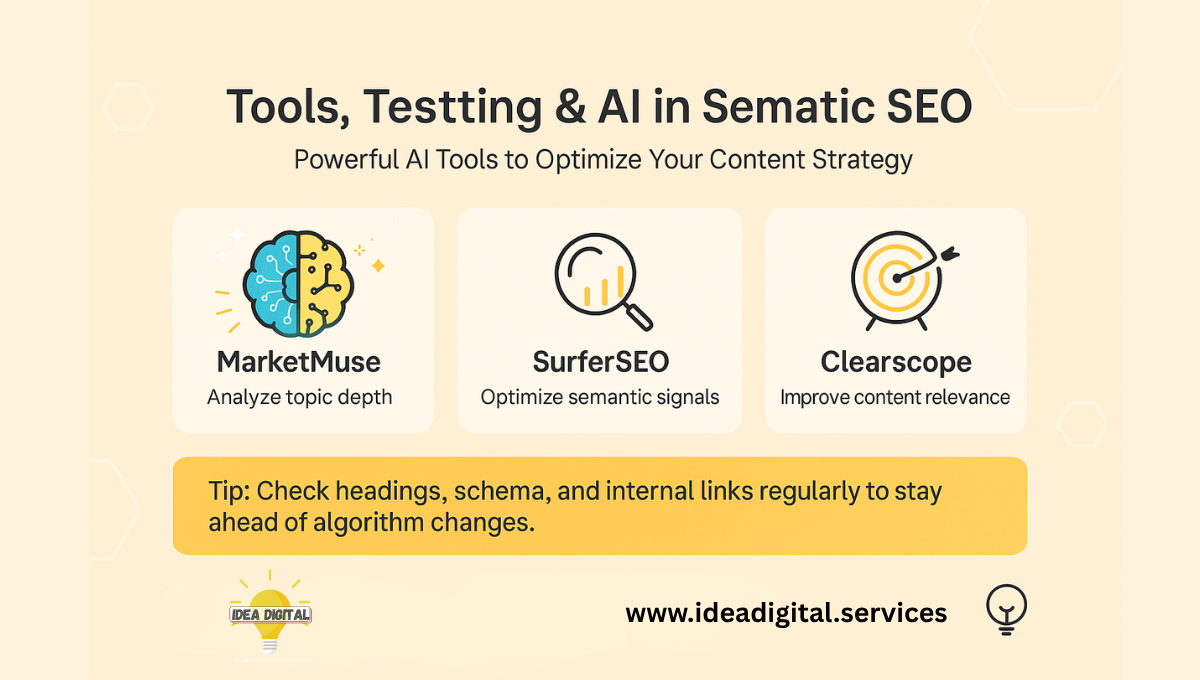
8. Monitoring, Audits & Content Refreshes
After you publish, your semantic SEO strategy continues. Frequent audits assist in ensuring that content complies with Google’s most recent guidelines, is up to date, and meets evolving user needs. To update schema markups, add new keywords, and lengthen sections, go back to earlier content. Plan audits at least twice a year to ensure your content is current and reliable.
You can demonstrate to Google that your website is reliable and active by taking care of your content in advance. This will maintain high traffic and improve your rankings over time.
9. Case Studies & Real-World Results
Many businesses now search differently thanks to semantic SEO strategies. A tech company restructured its blog using semantic markup, SEO, and semantic clusters. In just one year, organic traffic increased by 210% as a result. Similarly, an e-commerce company that employed semantic keyword research saw its product pages move from page three to page one for competitive keywords in just six months.
These achievements highlight the value of concentrating on user intent and meaning rather than outdated keyword tactics. Real-world results demonstrate that semantic SEO is effective and not just a theory.
10. The Future of Semantic SEO & AI in 2025
Semantic SEO will become even more crucial in the future as AI advances. Google’s algorithms are becoming increasingly adept at comprehending visual searches, voice-based interactions, and even conversational questions.
Make sure your content is comprehensive and covers all the information users might require if you want to stay ahead of the competition. By utilising AI-driven insights, optimising your semantic keyword research, and utilising semantic markup SEO, you can extend the lifespan and visibility of your website.
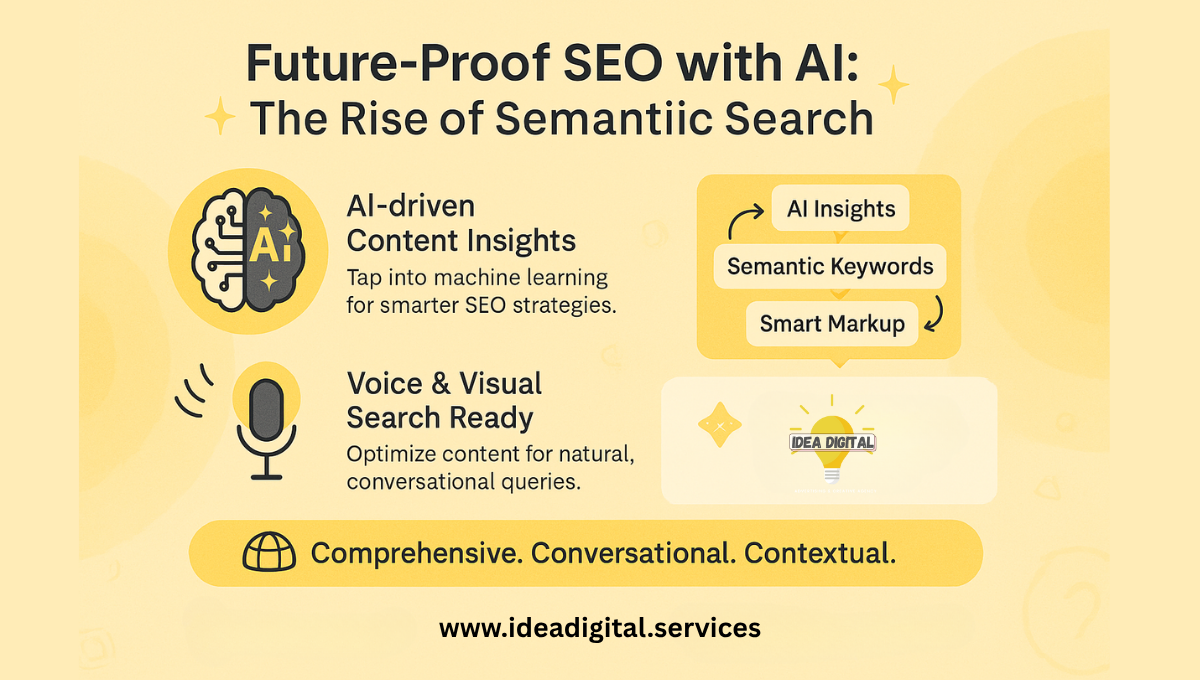
Conclusion: Launching a Semantic SEO Strategy in 2025
Learning how to use semantic SEO for higher rankings requires a complete shift in perspective regarding online content and audience connection, not just a small technical tweak. You can provide content that genuinely speaks to users’ needs and desires by grasping semantic SEO meaning and moving beyond basic keywords. By using this strategy, you establish your brand as an authority in your industry and gain the audience’s and Google’s long-term trust.
Clear content organisation, astute semantic keyword research, and successful semantic markup SEO are all components of a strong semantic SEO strategy that help establish authority and trust. This distinguishes and maintains your brand’s readiness for the future.
Are you prepared to secure your Google rankings for the future? To create content that ranks higher, resonates more, and converts better, collaborate with the top semantic SEO writer available today. Together, let’s create your success story.
FAQ’s
What does semantic SEO mean?
Semantic SEO means improving content based on what the user wants and the context, not just the exact keywords. This helps search engines understand your topic better.
Does using semantic HTML help with SEO?
Yes! Semantic HTML makes your site easier for search engines to understand and rank your content correctly. It also makes your site easier to navigate.
What does semantic markup SEO mean?
Semantic markup SEO means adding structured data (like schema) to your content to help search engines understand what it means. This makes it more likely to show up in rich results.
Is semantic SEO better than regular SEO?
Yes. Semantic SEO is better for modern search algorithms than keyword-focused methods because it focuses on meaning and relevance.



